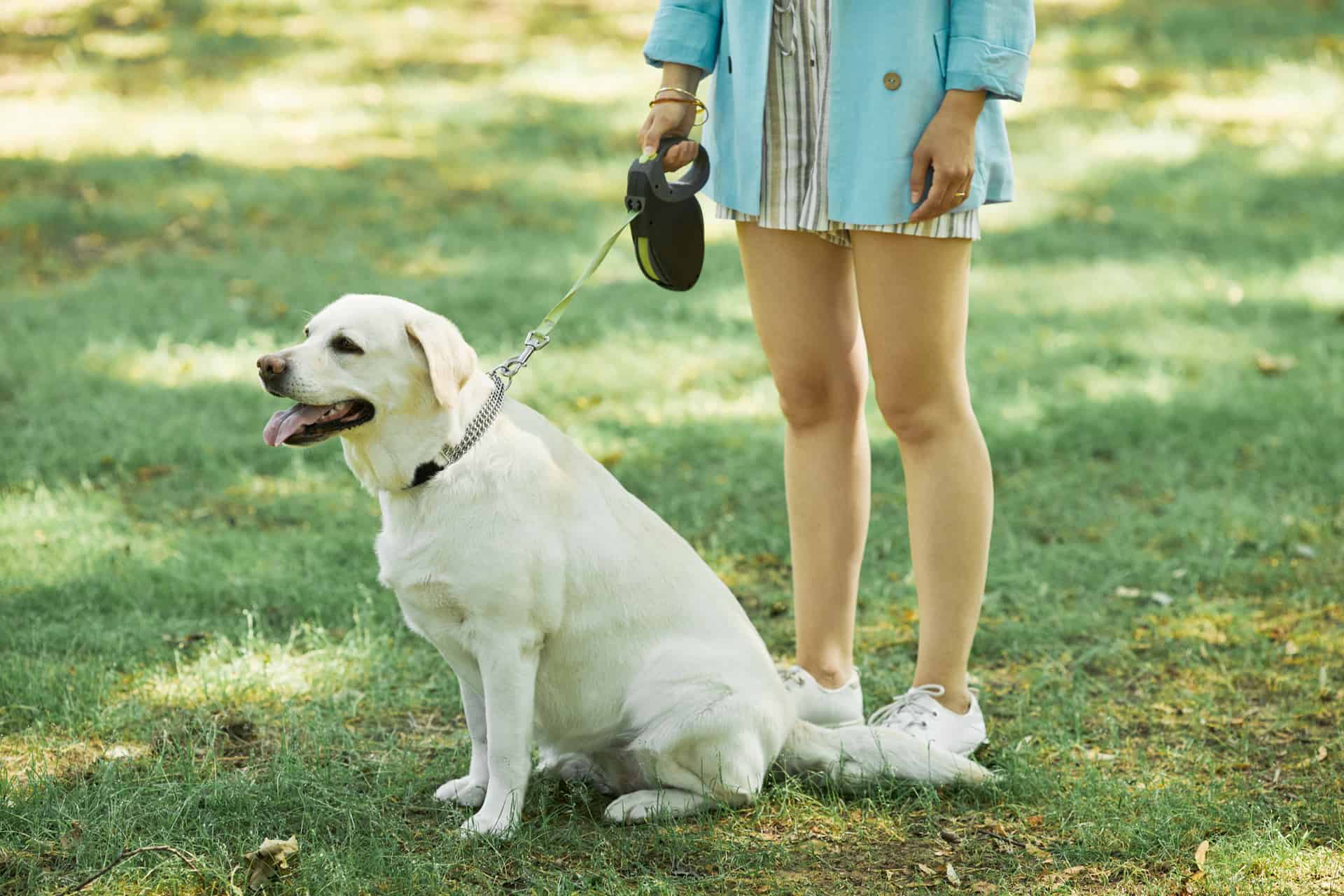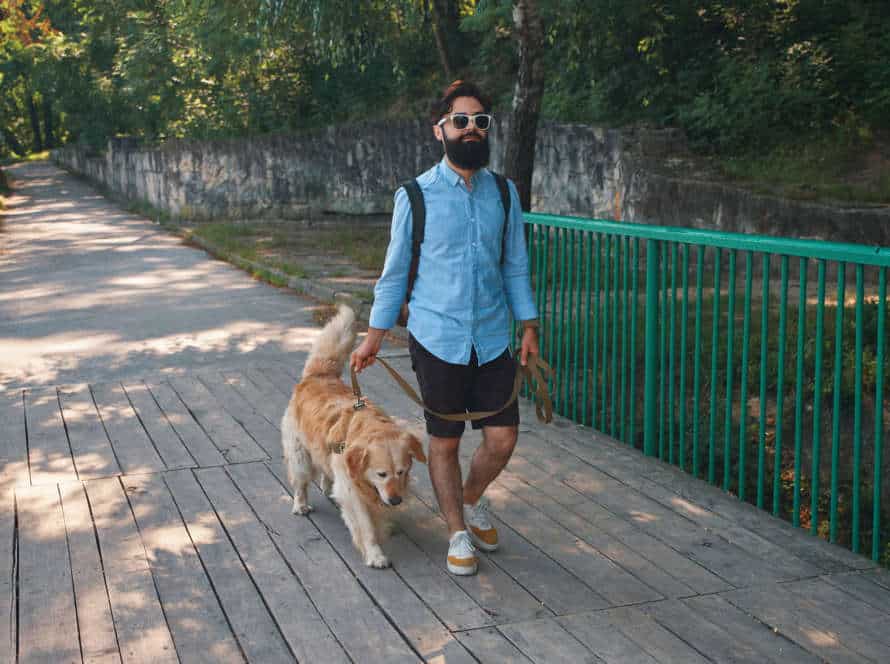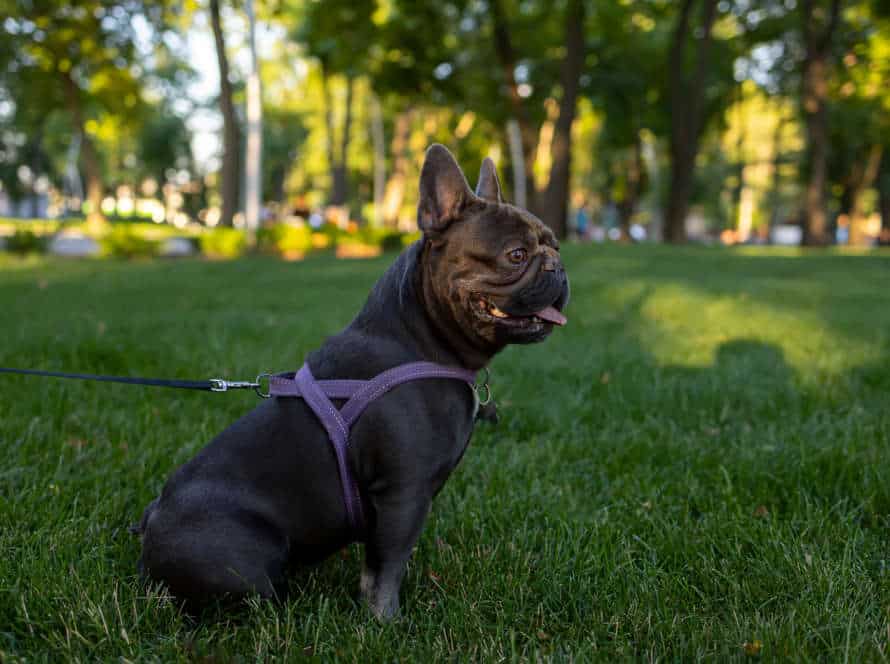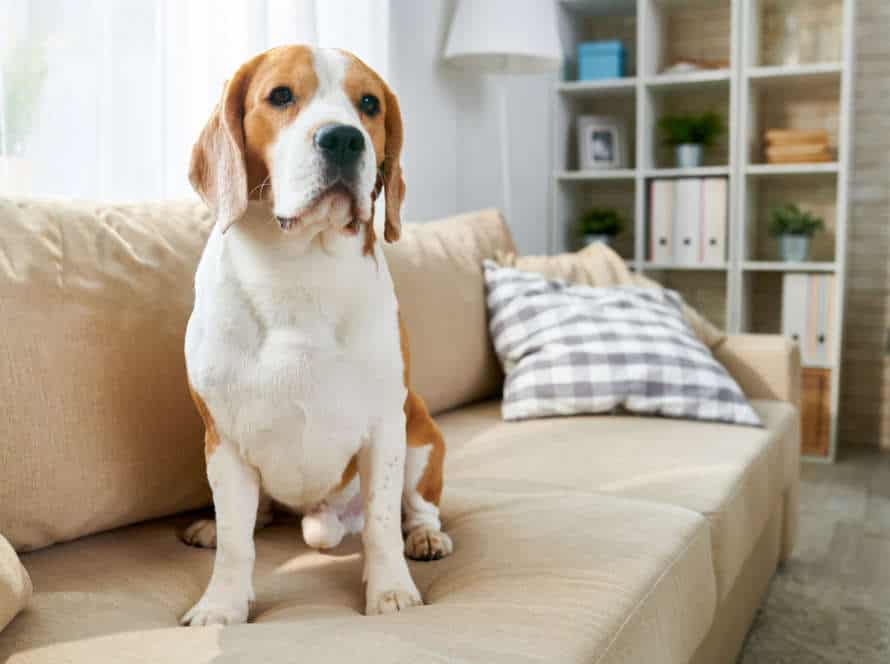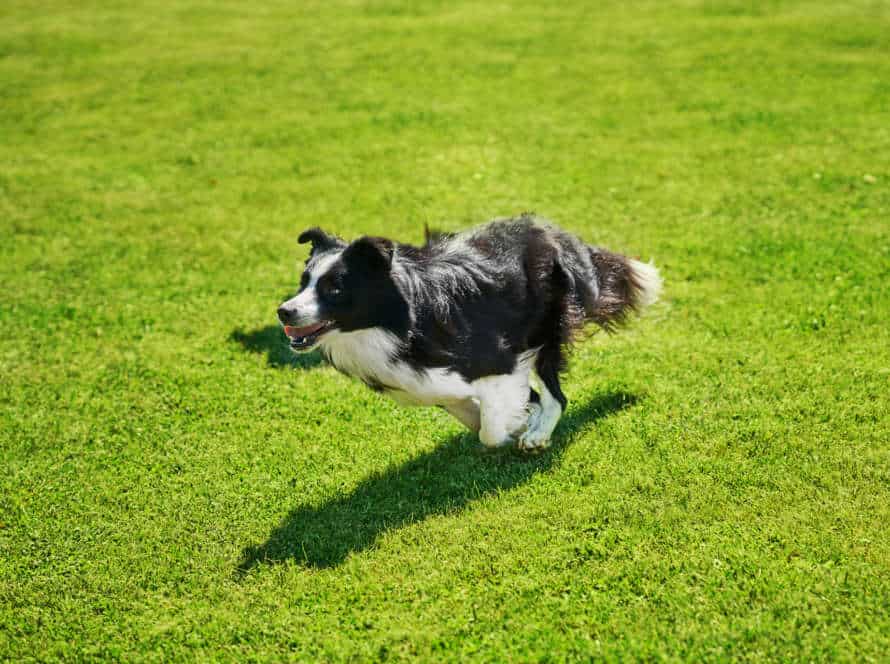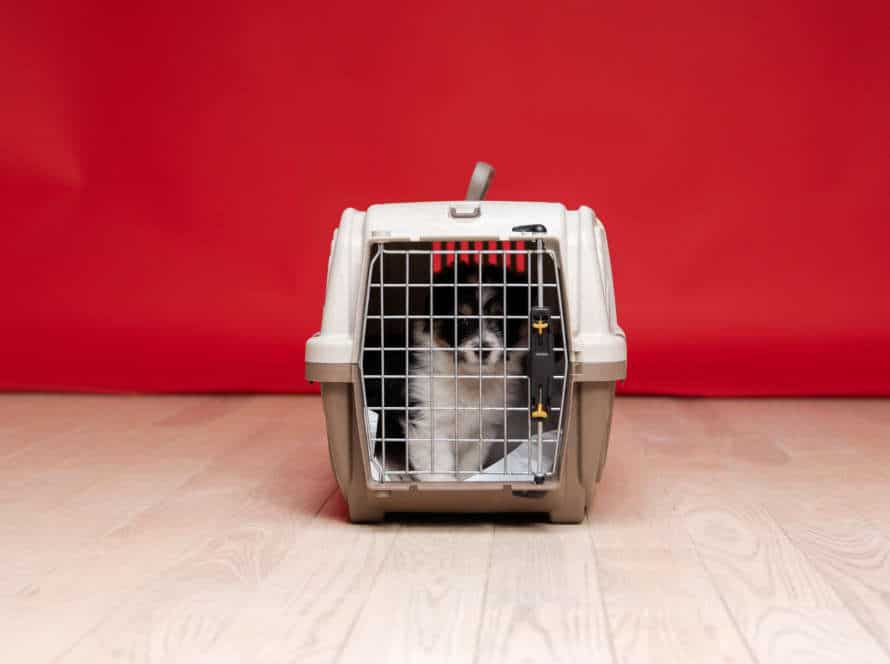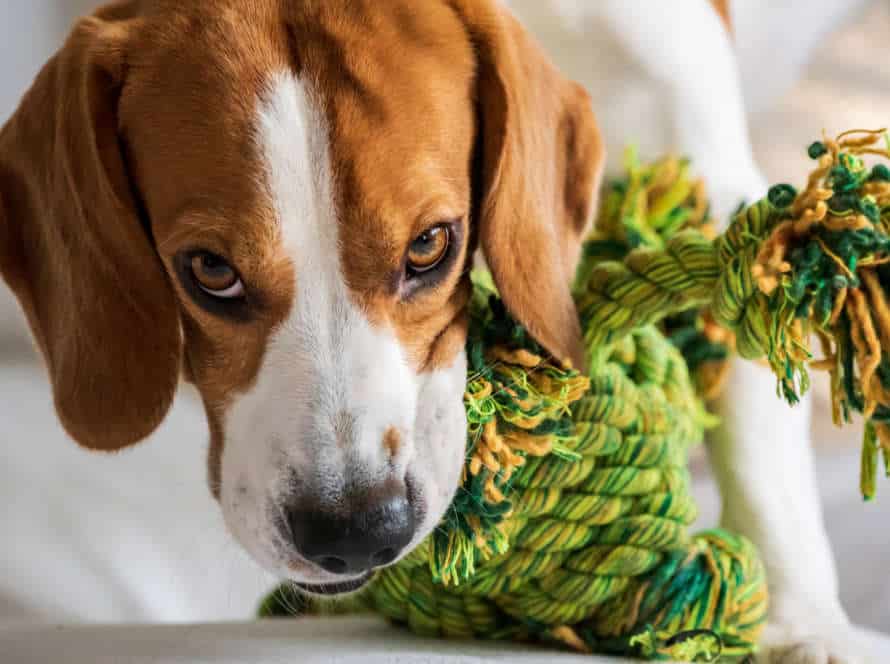How to Properly Fit Your Dog’s Leash Training Equipment
Fitting your pup’s leash and training supplies correctly is essential for their safety, comfort, and successful training. Follow these guidelines:
Collars:
Select the exact size to fit your dog’s neck snugly, not too loose or tight. You should be able to slip two fingers between your pup’s neck and the collar.
Harnesses:
Measure your pup’s girth just behind the shoulder blades. Choose a harness size that matches the measurement. Make sure the harness fits snugly, and the leash attachment is on the back.
Leashes:
Pick a leash according to your pup’s size and temper. For instance, a retractable leash may suit a well-trained, obedient pup who needs some freedom. Meanwhile, a standard leash may be better for a strong or unruly pup.
Always keep watch of your pup while they wear the equipment. Check that it fits properly and doesn’t cause any discomfort or harm.
Pro Tip: Examine the equipment regularly for signs of wear and tear and replace it when needed.
Understanding Your Dog’s Body Type
Choosing leash training equipment for your pup? Body type’s the key!
Different breeds are different sizes, shapes and temperaments. So the right equipment should fit their individual needs. Understand your dog’s body type to make the right choice. Knowing their size and shape will help you select the best equipment.
Measuring your dog’s neck size and body length
Before you buy a leash for your pup, it’s essential to measure the neck size and body length. Here’s how:
Take a soft measuring tape and wrap it around the base of your pup’s neck. Make sure it’s snug, but not too tight – you should be able to fit 2 fingers underneath it. Record the measurement in inches or cm.
To measure body length, start at the base of the neck and run the tape down to the base of their tail, following the spine. That’s their body length.
These measurements will help you get the right leash, ensuring pup is safe, comfy, and secure.
Identifying your dog’s weight and age
Knowing your pooch’s body type is key to properly fitting leash training supplies. Breed, age and weight all impact body type. So, it’s essential to recognize your pup’s body type for a comfy, secure fit. Here’s how:
- Weigh your pup on a scale and record the number.
- Measure their height from the ground to the top of their shoulder blades (withers).
- Check their age-pups and seniors have different body types than adult dogs.
Once you’ve identified your pup’s body type, you can choose the right equipment. This will make your pup feel confident and relaxed during training.
Choosing the right type of leash for your dog’s breed
Choosing the right leash for your pup’s breed is key! Popular types of leashes include standard, retractable, & martingale. But, selection depends on your dog’s size, breed, & body type. Here’s how to pick the perfect one:
- For small breeds like Chihuahuas & Pomeranians, choose a light leash that’s easy to handle.
- For bigger breeds like Retrievers & Dobermans, opt for a strong leash that can handle their weight & strength.
- If your dog pulls, get a no-pull or front-clip harness for better control.
- For breeds with respiratory issues, like Bulldogs & Pugs, use a flat collar instead of a choke or slip lead.
Check fit regularly & replace if worn or damaged.
Fitting Your Dog’s Collar or Harness
Fitting your pup’s leash training tools, like a collar or harness – is the initial move to successfully and safely taking your dog for a walk. It can be hard to find the right fit, but it is essential that you do. This guarantees that your canine is comfortable and secure while out on a stroll. In this article, we will cover the basics of fitting a collar or harness for your dog.
Choosing the right collar or harness size
It is essential to select the right size for your pup’s collar or harness. If it is too loose, it can slip off or get stuck. If it is too tight, it can cause pain and harm.
Here are the instructions for fitting:
Collar: Use a soft tape measure to measure around your pup’s neck, then add two inches. This is their preferred collar size. Ensure that the collar is snug, but not too tight.
Harness: Measure your doggo’s girth (the widest part of their rib cage) with a soft tape measure. Add two inches to the number. This is their desired harness size. It should be firmly secured, but you should be able to slip one or two fingers between the harness and your furry bud’s skin.
Pro Tip: Regularly check the size of the collar or harness, particularly if your pup is still growing. The perfect fit ensures your pup’s comfort and safety during your walks and training sessions.
Ensuring the collar or harness is not too tight or too loose
It’s key to make sure that your pup’s collar or harness fits just right. Too tight or too loose, and they could end up uncomfortable and even get hurt. Here are some tips:
- Check the fit by slipping two fingers between the collar/harness and their neck/chest. There should be space for two fingers.
- Make sure it’s snug so it won’t slide off, but still loose enough for breathing.
- Ensure it doesn’t rub against the skin or cause any irritation.
- If your pup is still growing, check the fit every few weeks.
A good fit means comfort and safety for walks that are stress-free and enjoyable.
Adjusting the collar or harness for optimal comfort and safety
Making sure your pup’s collar or harness fits correctly is essential for their safety and comfort during leash training. Here’s how to adjust it for the best fit:
- Measure your furry pal’s neck or chest to get the right size.
- Make sure it’s snug, but not too tight. You should be able to fit two fingers between the collar/harness and their skin.
- Make sure it’s situated on their neck or chest, behind their ears and in front of their legs. This helps avoid choking or harm.
- Check how it fits every now and then. Adjust it if they change weight.
A correctly fitting collar/harness will keep them safe and comfy on walks and during leash training.
Fitting Your Dog’s Leash
Leash training your pup? Get it fitted correctly! It should be snug and comfy, so your pup doesn’t get injured. It provides assistance too! Here’s what you need to know about fitting a leash properly: the various aspects and benefits.
Choosing the right leash material and length
Selecting the best leash material and length is essential for a proper fit of your pup’s leash training gear.
- Nylon leashes are the most common type, lightweight, durable and easy to clean.
- Leather leashes offer durability and comfort but need extra care.
- Chain leashes should be avoided since they can cause harm to both you and your furry friend.
For optimal control, select a leash length between 4 and 6 feet. Shorter leashes give more command and are fit for urban areas, whereas longer leashes work better in open spaces such as parks and beaches.
Pro tip: Account for your pet’s size and strength when selecting leash material and length. Heavier and stronger dogs require sturdier and shorter leashes for superior control.
Ensuring the leash is not too heavy or too light for your dog
Choosing the right weight for your dog’s leash is key to his safety and comfort when out on a walk. If it’s too heavy, it can cause strain to his neck and shoulders. If it’s too light, it may not hold him in an emergency.
Here are tips for fitting your dog’s leash properly:
- Check the weight and width – make sure it’s good for his size and strength. Generally, it should be no heavier than his weight.
- Check the durability – make sure it can handle his pulling and tugging.
- Check the length – make sure it’s the right length for the route and environment.
- Always watch your dog – adjust the leash as needed for his safety.
Testing the leash for durability and longevity
When it comes to leashes, test them for durability and longevity. Pull and check for wear and tear. Clip them onto your pup’s collar and pull gently. Make sure the length is right for your furry friend’s size. Adjustability also matters, get it just right for their height and walking style. A fitting leash is important for training and preventing bad behavior. Pro tip: Invest in high-quality nylon or leather leashes for their safety and comfort.
Putting on and Removing the Equipment
Leash training your pup? Get the right fit! It’s important for their comfort and safety. Here’s how:
- Measure your dog
- Put on the equipment
Simple tips can help. In this article, we’ll explore proper fitting and removal of leash training gear for your pup.
Proper technique for putting on the collar or harness
Putting on a collar or harness is important when fitting leash training equipment for your dog. Here’s the correct way to do it:
- For a collar: Grab the collar buckle, slip the collar over your pup’s head and adjust it. Make sure it fits snugly around their neck and leave two fingers’ gap. Lastly, fasten the buckle.
- For a harness: Put the harness on the ground, let your dog step into it with their front legs. Pull it up around their shoulders and back, so that the D-ring is in the middle of their back. Buckle it around their chest, adjusting the fit so it’s snug.
This way, you can ensure your dog is safe and comfortable while wearing their leash training equipment.
Proper technique for attaching the leash to the collar or harness
Leashing your pooch is key for safe and comfy walks. Here are the proper techniques:
For a collar: Put it around the pup’s neck. Not too tight. Clip the leash to the ring, not the ID ring (which may come off).
For a harness: Slide it over their head. Both front legs through the openings. Attach leash to the back ring.
Before going out, double-check for a secure attachment. This prevents accidents and injuries!
Step-by-step guide for removing the equipment after training
Once your pup’s training is done, be sure to take off their leash gear carefully to avoid any harm. Follow these 6 simple steps to properly remove it:
- Loosen the collar or harness up slowly.
- Unbuckle the collar if that’s what your pup is wearing.
- If your pup has a slip collar, carefully slide it off their head.
- Undo the buckles or snaps of the harness to take it off.
- Examine your pup’s fur and skin for any signs of injury due to the equipment.
- Put the equipment away in a place your pup can’t reach.
Pro tip: Clean the equipment before storing it to make it last longer!
Common Fitting Mistakes to Avoid
Leash training can be great for you and your pup. But, there are some fitting errors that can complicate the process. To keep your canine safe and happy on walks, make sure you fit the equipment properly. Here, we will go through how to do that, as well as what mistakes to avoid.
Over-tightening the collar or harness
Dog owners often make the mistake of over-tightening their pup’s leash training equipment. This could cause pain and bad behavior during training. Here are a few pointers for proper fitting:
- Measure your pup’s neck or chest size and adjustability.
- Make sure you can fit two fingers between the collar or harness and your pup’s skin when it’s fastened.
- Check for any gaps or looseness that could let your pup slip out.
- Observe your pup’s behavior and comfort level wearing the collar or harness.
Using these tips helps ensure a comfortable fit, meaning better leash training!
Underestimating your dog’s breed or size
Do not underestimate your pup’s breed or size. It can lead to mistakes when picking and using leash training gear. Every breed and size has different needs and may require certain types of equipment. Here are some common errors to dodge:
- Choosing the wrong size: Using an unsuitable size collar or harness can cause discomfort, pain, or even injury. Measure your pup’s neck and chest girth. Make sure the equipment fits well but not too tight.
- Using the wrong type of collar: There are different collar types like flat collars, Martingale collars, and head collars. They all have different uses depending on the breed and size. Do research and consult with a professional trainer to pick the best option.
- Not adjusting the equipment properly: An ill-fitting collar or harness can mess up your pup’s movement, breathing, and training. Read the instructions and adjust the fit for your pup’s body shape and behavior.
By avoiding these common fitting mistakes, you can make sure leash training is safe and effective for your furry friend.
Ignoring your dog’s comfort and safety needs
Dog owners can make a mistake when selecting and fitting leash training equipment. Avoid these mistakes:
- Choose the wrong size. Measure dog’s neck, chest and weight.
- Place harness too far back or too low. It should fit snuggly around chest with a ring for leash attachment centered between shoulder blades.
- Leash too long or short. Standard leash length of 6 feet is best.
Pro Tip: Supervise your dog when using leash training equipment. Adjust fit for comfort and safety.
Frequently Asked Questions
1. How do I know what size leash to get for my dog?
It’s important to measure your dog’s neck and chest to find the right size leash. Measure the neck at the base and add a few inches, then measure the widest part of the chest and add a few inches. Use these measurements to find the appropriate leash size.
2. Should I use a collar or a harness for leash training?
This depends on your dog’s breed and individual needs. Collars are usually sufficient for small or low-energy dogs, while harnesses are better for larger or more active dogs. Consult with your veterinarian or a dog trainer to determine the best option for your pet.
3. How tight should the leash be on my dog’s neck or chest?
The leash should be snug but not too tight. You should be able to fit two fingers between the leash and your dog’s neck or chest. If it’s too loose, your dog may slip out of the collar or harness, and if it’s too tight, it can cause discomfort or injury.
4. Can I adjust the fit of the leash training equipment as my dog grows?
Yes, it’s important to regularly check the fit of your dog’s leash and adjust it as necessary. Puppies and young dogs may need the leash adjusted more frequently as they grow and develop, but adult dogs may also need occasional adjustments as their weight or activity level changes.
5. Is it safe to leave a leash or collar on my dog when I’m not home?
No, it’s not recommended to leave your dog unattended with a leash or collar on. This can be a safety hazard if the leash gets caught on something or if your dog becomes entangled. Only use the leash during supervised activities, such as walks or training sessions.
6. Can I use any type of leash for leash training?
No, it’s important to use a leash specifically designed for dog training. These leashes are typically made from durable materials and have a comfortable grip for the owner. Avoid using retractable leashes, as they can be difficult to control and may lead to injury or loss of control.

